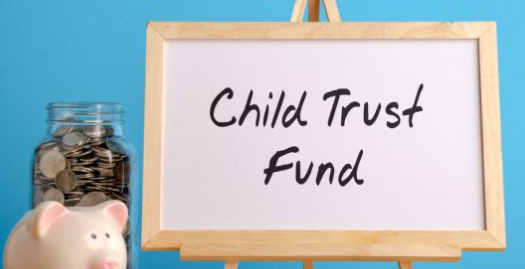
While the housing market is unlikely to crash in 2023, sellers should expect property values to creep downward. And so those interested in finding a buyer should get moving with a listing sooner rather than later.
By reducing demand from existing homeowners, Reahard thinks that increasing interest rates will delay or prevent a market crash. He asserts that because of the rising cost of borrowing money, many current homeowners who might need more space are delaying selling their homes.
There is less competition and no recession at the moment, which is a benefit of selling a home. The labor market is still remarkably robust, in fact. A possible housing market decline can be avoided by listing a home now.
Additionally, some individuals might want to buy a home before the new year. Despite the fact that colder weather is approaching, now is a good time to list a home for sale.
Table of Contents
When Will the Housing Market Crash?
Real estate companies and experts are having a tough time keeping up with the current state of the housing market, which is adjusting to record-high inflation and higher interest rates. The continued pressure of these forces is making it difficult for those who make predictions about the future. What are the housing market crash predictions for the next five years? Understanding the root causes of real estate market declines is essential before providing an answer to this question.
First, it is essential to recognize that housing markets do not suddenly crash. A market will experience pressure from a number of factors over time, eventually leading to its collapse. A housing bubble develops when home values rise too quickly. It may rise when there is a demand and the ability to purchase. Competition raises prices when there aren’t enough homes available to meet demand.
The housing market might crash if a bubble in housing grows and pressure increases. Increases in interest rates cause the economy to sputter. Jobs and demand could both decline. A buyer’s market and lower prices are encouraged by oversupply. A decline or stalling in the housing market may then occur. How do you know how bad it will be and how quickly things will improve? It depends on how sustainable development was before the slowdown and how serious the causes are.
Moody’s Analytics’ Chief Economist Mark Zandi expressed concern about a housing market crash. Nevertheless, he is confident that the economy and market will not crash as they did previously. Home prices will level off in 2023, he predicts, declining in some regions of the country while slightly increasing in others. This prediction for 2023 appears fairly accurate when compared to the increase in 2022.
For 2023, the group projects home price declines of 1.5 percent, down from its prior forecast of home price growth of 4.4 percent. It has reduced our forecast for single-family mortgage originations in 2022 to $2.33 trillion (from $2.44 trillion) and its forecast in 2023 to $1.74 trillion (from $2.17 trillion) as a result of changes to its outlook for home sales and mortgage rates.
Aside from reduced affordability, Fannie Mae forecasts that as mortgage rates rise, the “lock-in” effect, in which existing mortgage borrowers have rates well below current market rates, is limiting the number of move-up buyers. Despite the fact that the overall number of homes for sale is still growing, the slowing rate of sales is the main cause of this.
New listings in September were 9.8 percent lower than a year ago. Sales will almost certainly continue to suffer from the combination of declining affordability and a significant financial incentive for current homeowners not to refinance at rates in the current market.
The new home sales decline is also expected to continue but there are growing numbers of statements from homebuilders pointing to an increased willingness to more heavily discount homes to drive sales volumes more. Even though the construction of multifamily housing is still progressing quickly, there are signs that rent growth is slowing and vacancy rates are rising. The multifamily starts are predicted to slow meaningfully in 2023 following their torrid pace this year.

Will the Mortgage Market Decline?
The Economic & Strategic Research (ESR) Group has revised its projections for home sales and mortgage rates, reducing its estimates for single-family mortgage originations in 2022 and 2023 from $2.44 trillion and $1.74 trillion, respectively, to $2.33 trillion and $1.74 trillion, respectively.
The total number of mortgage originations is now expected to be $2.47 trillion in 2022, down from the previous projection by $61 billion by the Economic & Strategic Research (ESR) Group. They predict that overall originations will decrease even more in 2023, reaching $2.29 trillion. This is an improvement of $66 billion from the prediction made last month, though.
Due to recently received mortgage application data and our downwardly revised outlooks for home sales and home price growth, the forecast for 2022 purchase mortgage origination volumes has been downgraded from last month’s forecast to $1.6 trillion, a decrease of $78 billion. It has revised its forecast for purchase volumes for 2023 downward by $338 billion from last month’s projection, anticipating a 18% year-over-year decline to $1.3 trillion, which is again primarily due to lower expectations for home prices and substantial revisions downward for its forecast for home sales.
In the refinance market, it now anticipates volumes to reach $701 billion in 2022, $30 billion less than the previous forecast, due to a decline in refinancing applications as a result of the environment’s higher interest rates. The group projects $392 billion in refinance volume for 2023, down $98 billion from the previous month’s prediction and reflecting our expectation of persistently higher rates.
Will the Housing Market Crash – Quarterly Outlook
Indicators of typical house price inflation in the US include the FMHPI. It demonstrates that due to strong housing demand and historically low mortgage rates, home prices rose by 11.3 percent in 2020 and 15.9 percent in 2021. According to Freddie Mac’s quarterly housing forecast released in As markets absorbed the effects of higher mortgage rates in October 2022, the housing market quickly slowed down.
Home sales are expected to decline from 7 million units earlier this year to 5.4 million units at a seasonally adjusted annual rate in the third quarter of 2022. According to their housing forecast, at the end of next year, home sales will peak at about 5 million units. The decline in home sales from 7 million to 5 million, or a drop of about 30%, would be consistent with other historical periods when interest rates were higher.
Freddie Mac predicts that the months’ supply of homes for sale will increase from last year’s historically low levels as housing market activity continues to decline. The severe upward pressure on property prices that had been present for the previous two years is relieved by the opening up of the formerly severely constrained for-sale inventory. As high mortgage rates deter current homeowners from upgrading or downsizing, fewer new listings are created, which partially offsets the increase in months’ supply caused by fewer sales.
House prices have risen by approximately 40% since 2020 (compared to a cumulative inflation rate of 15%), but the rise in mortgage rates has caused a correction in house prices. Although there are significant downside risks, the government-sponsored enterprise anticipates a slight decline in housing prices. The housing market will continue to be weak in 2023 as the labor market cools, which could result in price drops the following year. Due to interest rate volatility and the potential for a recession, home price forecast uncertainty is high.
Despite the fact that home prices keep breaking records, according to a panel of economists and housing experts surveyed by Zillow, the market is not in a bubble. More than 100 professionals from the academic, public, and private sectors were questioned for the most recent Zillow Home Price Expectations study about the state of the housing market and its prospects for expansion, inflation projections, and recession risks. Sixty percent of those surveyed do not think the US housing market is currently in a bubble, while 32% think it is and 8% are unsure.
Respondents disregarded the housing bubble theory due to the market’s sound fundamentals, which included demographics, a limited supply, and changing housing preferences. Low credit risks were a result of sound loan underwriting and the majority of fixed-rate, fully amortized mortgages. Another substantial minority opposed the word “bubble,” which suggests an imminent crash. The main concern of proponents of the housing bubble is that prices will become unaffordable without historically low mortgage rates.
A bubble is not always present in a hot market. While a recession is on the horizon, the housing market today is very different from that of the middle of the 2000s. Strong fundamentals and sound mortgages are supporting this market, and these factors won’t change anytime soon. Therefore, most of the housing crash predictions show us that prices aren’t likely to drop in the near future.
The panel’s expectations for home price appreciation in 2022 increased from 9.0% last quarter to 9.3% despite a more than 100-basis point increase in mortgage rates since the previous survey three months ago and the possibility of higher rates in the coming months. Compared to the 19.6% increase seen over the course of the 2021 calendar year, this would represent a sizable decline, but it would still be well above long-term historical averages.
Looking ahead, the most optimistic respondents predicted prices would increase by 46.1% between now and the end of 2026, while the most pessimistic respondents forecast a cumulative increase of only 9.3% during that time. By the end of 2026, respondents will have raised prices by a total of 26.4%, on average.
There will be significant technological advancements in the real estate industry over the next five years as well, which may have an effect on supply and demand. After a year in which home prices in the US rose by an unsustainable 18.8%, the housing market is currently recovering. Will the market continue to grow at this rate or will it be a little less frenetic this year?
An already challenging market with limited inventory and record price growth has become even more unfavorable for homebuyers as a result of an unprecedented interest rate increase. Even industry titans like Zillow decreased their bullishness in September 2022, decreasing their projected home price growth rate for the next twelve months to 1.3 percent.
Zillow’s home value forecast expects a significant slowdown in annual home value growth – as measured by the raw Zillow Home Value Index from the current rate of 12.9% annual growth to 1.3% growth for the twelve months ending September 2023. Following a better-than-expected reading on home sales in August, Zillow’s home sales forecast now projects 5.2 million existing home sales in 2022, up slightly from last month’s expectations of 5.1 million sales.
The picture is less clear from there, though, and recent drops in mortgage applications and pending home sales activity indicate that there are sizable downside risks to the volume of home sales through 2023. The housing market is currently rebalancing despite ongoing headwinds as a result of these prediction changes.
For both potential buyers and sellers of homes, rising and erratic mortgage rates continue to be a challenge. Demand is constrained and prices are under pressure due to affordability barriers that are at their highest level ever. The number of new listings continues to be significantly fewer than a year ago, providing some support for prices but limiting the possibility of sales activity. As the end of the year approaches, the housing market faces considerable downside risks.
One of the most widely held housing market predictions for 2022 & 2023 is that inventory will remain scarce but price appreciation will be slower than it was in the last two years. There probably won’t be enough listings, even in the spring and summer, to satisfy demand. Due to the pandemic, there has been a strong demand for homes in almost every area of the country. This has resulted in a particularly healthy housing market.
This year, the cost of taking out a mortgage has been rising steadily. The majority of experts anticipated that mortgage rates would increase this year, but they did so sooner than anticipated, with 30-year fixed-rate mortgages reaching an average of more than 4% in mid-February. Around mid-April, it surged to 5.28 percent, the highest level since April 2010, and the uptick continues. As of right now, the benchmark 30-year fixed mortgage’s average rate has surpassed 7%.
As interest rates rise, monthly affordability suffers, but we’ll also lose more of the investors who are looking for leverage once in a lifetime. Rising interest rates may therefore also be a sign of a more balanced market. All types of buyers flocked to the market in 2021 as rates were so low, and since there was a shortage of housing, prices have risen sharply. Additionally, affordability is emphasized. The basics of housing needs would still continue to drive primary purchases forward. It’s a good thing that the housing market will be less volatile in 2023.
Read about How Long Does a Recession Last?
Only 5% of Metros Are Expected to See a Price Decline by August 2023
The S&P CoreLogic Case-Shiller Home Price Indices are a group of indices that measure real estate or housing prices. They monitor changes in residential home prices across the country. In August, the CoreLogic The S&P Case-Shiller Index showed a 13% increase, down from a 15.6% gain in July, signaling the fifth month in a row where annual home price appreciation has slowed.
The housing market’s sharp decline made this August’s annual gain less significant than those seen in 2004–2005 and 2021. In addition, the non-seasonally adjusted month-to-month index showed a second consecutive month of declines, falling by 1.1% in August from a peak increase of 2.6% in March and a decline of 0.5% in July. This suggests that home price growth will continue to slow, though possibly more quickly.
At this pace, and according to CoreLogic’s Home Price Index forecast, annual growth is expected to slow to 9% by December and down to less than 1% by the end of the first quarter of 2023. Some housing markets are seeing a more significant slowing of home price appreciation, particularly those on the West Coast and in the Mountain West, where high mortgage rates are severely impacting housing affordability.
However, there are still regional differences, with affordable regions in the South and Southeast continuing to prosper as out-migration from more expensive markets lasts. However, nationwide home price growth should continue to slow down; by the beginning of next year, the forecast for the majority of metro areas is low single digits. By August 2023, price decreases are only expected to occur in about 5% of metro areas.
After six straight months of Tampa, Florida leading the nation for appreciation, Miami posted the strongest annual home price growth among the 20 tracked markets, surging by 28.6% in August, down from July’s non-seasonally adjusted rate of 31.8%. Tampa is now in second place after increasing by 28% year over year in August, down from 31.7% in July.
The third-highest increase in August was reported by Charlotte, North Carolina, at 21.3%. With a 17.1% increase, Phoenix’s housing market, which is rapidly slowing, dropped the metro to sixth place, down from February, when it had recorded the index’s highest price growth with a 32.9% gain.
Where Will the Housing Market Crash?
In 2023, there is a chance that home prices in these top markets will fall or crash. Crestview-Fort Walton Beach-Destin, Florida, is at a very high risk (70%-plus probability) of a decline in home prices over the next 12 months, according to the CoreLogic Market Risk Indicator (MRI), a monthly update of the general health of housing markets across the country. Bremeton-Silverdale, Washington; Bellingham, Washington; Eugene, Oregon and Tacoma-Lakewood, Washington are also at very high risk for price declines.
Many concerns remain about the housing market. Critically, while one of the biggest drivers of home price growth has been the lack of supply, higher rates are holding back both potential sellers and new construction. As such, there is no relief in sight for an improvement in the housing supply and the sustainable housing market that would come with increased inventory.
What Can Sellers Do?
According to Jasmine Harris, an Atlanta real estate agent with Redfin, sellers were previously rejecting offers that were $100,000 above the asking price. Now, offers are coming in at, or even below, the list price, and sellers are hearing an unfamiliar word: concessions.
“I’m still in the shock of the past two years, so whenever I write an offer and ask for closing costs, I’ve been holding my breath,” she said, referring to the once common practice of sellers paying some of the buyer’s transaction fees. “However, I have been getting it.”
Agents reported that sellers are becoming more receptive to sweeteners, including agreeing to contract contingencies in the event of financing difficulties or offering to pay for lingering issues to smooth the deal, even in markets where prices have not decreased.
But the best strategy for sellers is to start at the right price, said Steven James, the president and chief executive of Berkshire Hathaway HomeServices New York Properties. Because of higher mortgage rates, he anticipates a 5–10% drop in prices in Manhattan. He advised sellers to act quickly because holding out on the market carries risks.
“The last thing you want in a shifting market is to have something sit,” he said. “The consumers are watching, and they’re thinking, ‘That one’s tainted.'”


